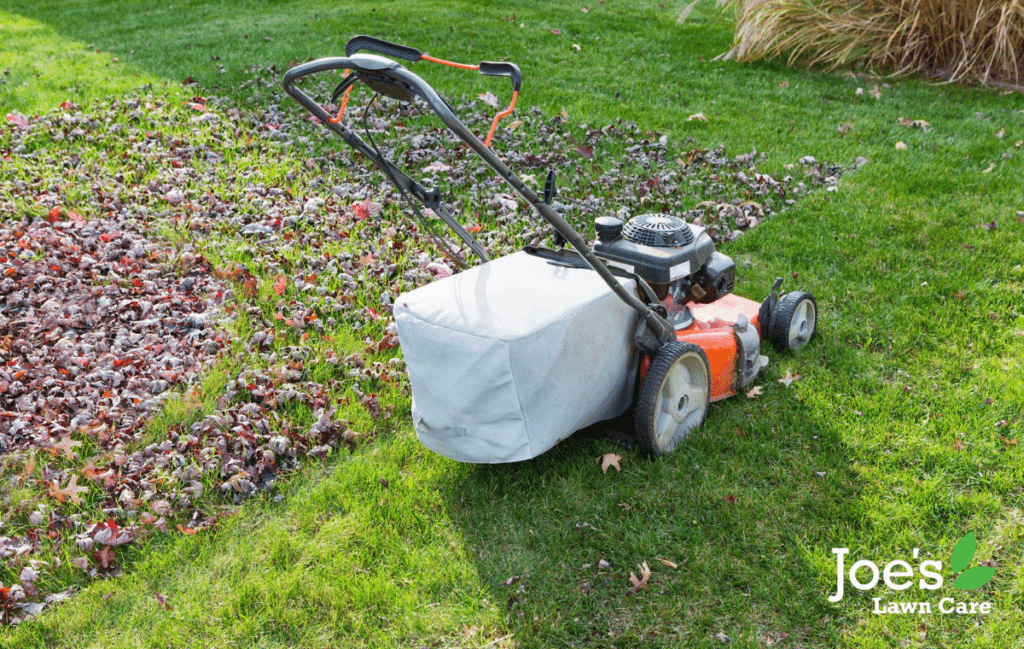The Benefits of Mulching Leaves Into Your Lawn in Autumn
The days are getting shorter, the mornings are getting colder and the trees are beginning to shed their gold and amber leaves. Translation: what are you planning to do with the big piles of leaves about to cover your lawn this autumn? Well, if you’re looking for a solution that’s packed full of benefits, there’s really only one answer: mulch them. Read on for Joe’s benefits to mulching leaves into your lawn this Autumn.
From using them as delicious mulch for your lawn to turning them into a fertilising filler for your compost pile. There are so many ways you can put those fallen leaves to good use (instead of bagging them and sending them off to landfill). After all, those gorgeous gold leaves are nothing less than free organic matter that can be used to the benefit of your garden.
Here’s everything you need to know:

The Easiest Way To Mulch Leaves
In the same way you deal with your grass clippings, fallen leaves should be mulched with a mulching mower, which uses a special mowing blade alongside a baffling beneath your mower deck. The way it works is this: when you mow your lawn, both the leaves and grass clippings go into the interior chamber before getting chopped up multiple times, until they’re fine enough to fall in between your grass blades and into the lawn surface.
Sure, a big pile of leaves may need to be mowed a few times before they’re finely mulched. However, this technique is way more cost-effective and sweat-saving than both raking and leaf blowing.
The Big Benefits of Mulching Your Leaves
Let’s get straight to it: Mulching is 100% beneficial for your lawn. And that’s not just us guessing, that’s the results of a recent study. This is because mulched leaves are a lot easier for earthworms and microorganisms to decompose, turning them into organic matter that will fertilise your lawn going into the winter months. Not only that, but when you mulch your leaves and then use them to feed your lawn, you’re helping them feed the earth instead of going to landfill.
The other pinch-yourself result we learned from that in-depth study was: mulched leaves have zero negative effects on your lawn. In fact, mulched leaves actually have a bunch of positive results. Especially maple leaves which actually helped prevent broadleaf weeds from springing up, such as dandelions. What’s more, mulched leaves also have a beneficial effect on the quality and colour of your lawn.
Mulching With Lawn Care in Mind
As with everything, moderation is the secret to getting the most out of your leaf mulching. That’s because mulching too many leaves can actually smother your grass. This can prevent it from growing thick and healthy. What’s more, too many leaves can actually create a matted carpet known as thatch. And thatch prevents your soil from getting the nutrients, water and sunshine it requires to grow.
The obvious way to stop this from happening is to mulch in moderation and make sure you’re not smothering your lawn. Basically, you want to be able to see your grass blades standing tall and upright through your mulched leaves. That might mean using a leaf blower or rake to spread your mulch around evenly, making sure there are no areas where it’s especially thick or thin.
Our Top Mulching Tip
If your lawn is surrounded by deciduous trees and you’re expecting an almost-overwhelming amount of fallen leaves landing on your grass, try using some of them in your flower beds, your vegetable patch and even your compost pile. That’s because your lawn isn’t the only area of your garden that can reap the benefits of mulched leaves. The aim is to try and use as many fallen leaves as possible and avoid raking, leaf blowing, collecting, or disposing of them in any way that means your leaves end up away from your home.
That said, if you mulch correctly but find your lawn still isn’t growing correctly, there is probably another factor worth investigating: soil microbial life — or, more specifically, a lack thereof. In that instance, it’s important to understand that mulched leaves are not a replacement for your lawn fertilizer schedule. They’re more of a soil amendment. As such, you’ll still need to keep on top of your fertilizing. Doing this will help the microbes in your soil breakdown the mulched leaves faster. And in turn helping you to avoid a thick layer of mulch or thatch.
Thanks for reading our blog ‘The Benefits of Mulching Leaves Into Your Lawn in Autumn’. For more lawn care tips and tricks, follow us on Facebook and Instagram.





